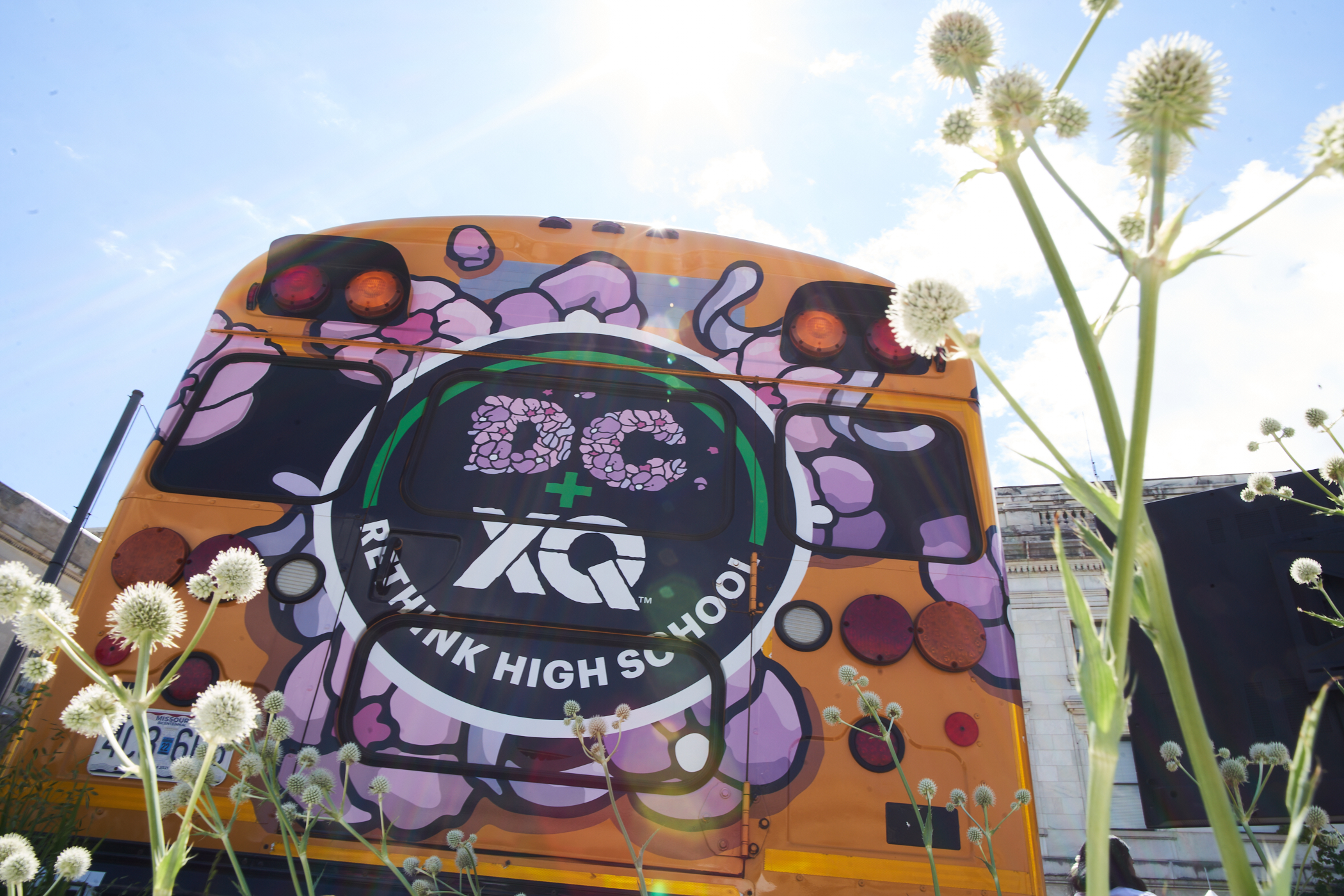5 Resources to Put Your School Reopening Plans into Action
Schools around the country are preparing to reopen, go remote, or a combination of the two. Here's how we can put those plans into action.

Let’s continue the conversation about how to develop original thinkers for an uncertain world, an XQ Learner Goal, as we continue drafting school reopening plans.
We’ve spent the last few weeks talking about problems in our communities and our larger society. Now, it’s time to talk about solutions and how to achieve them. Let’s dive in…
1. RETHINK: We’re Lucky to Have a Chance for a “Do-Over”

We need to stop racing to get things “back to normal.”
Why it matters: What we defined as “normal” before the pandemic means keeping marginalized students marginalized. School reopening plans are our chance to get it right—to truly ensure equity for all students. The National Education Civil Rights Alliance provides more insight.
Recent data tells us that “normal” looks like:
- 290K students referred to law enforcement agencies or arrested in a school year
- 87K students subjected to physical/mechanical restraints in a school year
- 1.6 million students attend schools with SROs but not school counselors
What our schools CAN look like:
- Students with the greatest challenges get the deepest supports
- Educators see behavior challenges as a cry for help and need for learning
- Families get the support they need to support students at home
How to make this “do-over” a reality:
“We need to fight to ensure COVID-induced state and local budget woes do not result in state and local education cuts—especially for the most marginalized students.”
2. REFLECT: Really Think About What Can We Do Differently

It’s important to acknowledge that we all played a role in perpetuating systemic inequities in our education system.
Why it matters: We all must play a role in dismantling systemic inequities. The Educating All Learners Alliance suggests beginning this work by understanding that we must be willing to change and grow in service to our students.
A few prompts to get you started:
- Question your assumptions
- Reframe the challenges you face
- Engage a representative team
- Explore and collect perspectives
- Gather tools and information that define the landscape
- Identify a range of solutions and test them
Some guiding questions to help move your work forward:
- How can we integrate social-emotional and trauma-informed approaches to learning?
- How can we prioritize high-quality learning that closes gaps and empowers students?
- How can we foster supports, capacity, and professional learning for educators?
- How can we ensure our fiscal planning prioritizes student learning, safety, and development?
3. FOLLOW: 10 Student-Centered Principles for Reopening

It’s crucial that students have a voice in the decision-making processes that inform our school reopening plans.
Why it matters: How can we create more equitable schools by making decisions on behalf of our students without fully understanding what they need? The best way to prevent sidelining student voices—especially marginalized voices—is to include them directly.
That’s why youth-driven organizations came together to create 10 guiding principles for taking action to drive student-centric change:
- Prioritize comprehensive support for marginalized students
- Encourage the public sector to support closing the digital divide
- Provide teachers and staff with full support to advance educational equity
- Give students access to differentiated, contextualized instruction
- Equip students to analyze our country’s history of injustice and respond as civic actors
4. EXPLORE: There Are Multiple Solutions for the Problem

Right now, educators are tasked with solving an impossible problem—ensuring students are safe and receive high-quality learning opportunities with extremely limited budgets and facilities.
Why it matters: There is no “best way” to reopen schools. But what we do know is that what we were doing before wasn’t working. In the words of NGLC’s Andy Calkins, “Desperate times call for different methods.” Examine examples of schools doing exactly that.
Miami-Dade County Public Schools is giving families a choice between:
- Schoolhouse
full-time in school
- Hybrid
mix of in school and at home
- My School Online
full-time remote learning
Vista Unified School District divided teachers into teams to develop new approaches to:
- Instruction
- Social-emotional learning
- Health and safety
- Nutrition
- Technology
5. COMMIT: The Future of Our Schools Is What We Make It

Why can’t schools be spaces of justice, high expectations, creativity, and more when they reopen?
Why it matters: Schools can be all of the above. By imagining what’s possible, we can craft a plan to achieve that vision. Gabrielle Rappolt-Schlichtmann, Temple Lovelace, Lindsay Kruse and Eric Tucker recommend practicing 3 inclusive, anti-racist commitments to help educators turn this vision into a reality.
Commit to anti-racist teaching:
- Build awareness about racism and ableism
- Reflect on how your identity shapes your teaching, relationships, and practice
- Understand that there’s no such thing as a “normal” student; all students are unique
Address the root causes of system failures:
- Work with key stakeholders—educators, students, and families—to identify goals
- Define challenges that need to be solved to reach your shared goal
- Develop solutions; implement and refine
Design for all students:
- Make intentions and assumptions clear before jumping to solutions
- Leverage empathy with the lived experience of your students
- Build a learning environment broadly designed for variability
XQ X-TRA: Do Students Have a Civil Right to High-Quality Education?

Watch XQ’s Russlynn Ali and Civil Rights icons Danny Glover, Bob Moses, Mark Rosenbaum, BJ Walker, and youth activist Jamarria Hall in this on-demand town hall discussion on quality education as a constitutional right.
Join the conversation on the Rethink Together Forum. →
PHOTO BY KID CIRCUS ON UNSPLASH









